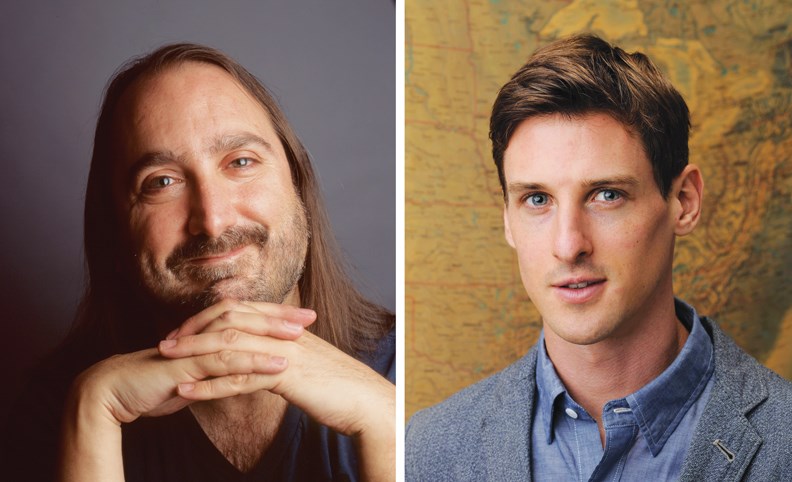Two authors will present at the Festival of the Written Arts in Sechelt this Sunday: one on trails, the other on whales. The two books have much in common – they both honour the environment and they both make fascinating reading. Tickets for the two events can be had on www.share-there.com and more information is at writersfestival.ca
Robert Moor - Sunday, Aug. 20 at 9 a.m.
A Halfmoon Bay resident, Robert Moor has had a lengthy journey to a writing career. It has taken him from studying literature at a progressive university in the States, to working on magazines in New York, writing for prestigious publications such as Harper’s and GQ, to his first book, On Trails (Simon & Schuster). We all make trails: humans have done so for centuries, ants follow scent trails, elephants make paths through the terrain and even ancient creatures that show up in the fossil record leave a smudge. But this is not another trail hiking story; it’s a meditative, thoroughly researched book that covers subjects ranging from animal and insect behavior to the very purpose of our existence.
It was a travel writing workshop that opened Moor’s eyes to quality narrative from authors like Bruce Chatwin. He rejected it at first.
“I thought it was something that writers did for free vacations,” he told Coast Reporter. After returning to graduate school, Moor was awarded the Middlebury Fellowship in Environmental Journalism that offered money to pursue feature articles. It was time to go travelling and work on his thesis at the same time. Over the years he travelled to Iceland, Newfoundland and Africa, but the book opens with his most important trip. In 2009 he was a “through-hiker,” walking the 2,000 mile distance on the Appalachian Trail that runs from Georgia in the south to Maine in the north.
“Journalism and writing doesn’t pay that well,” he said. “Trekking doesn’t cost a lot. I sublet my apartment, sold my furniture … and walked.” The trek paid off as the subject for a graduate thesis that later formed the basis for his book. With a book proposal in hand, he realized he didn’t have to live in a city any more, and with a partner, he moved to a cabin in Halfmoon Bay. One of the more interesting segues in the book is a story about getting lost on the Sunshine Coast on a spot called by locals the Grassy Knoll. He has hiked the local trails: the Suncoaster and the Sunshine Coast Trail favoured for its hut-to-hut hiking.
“I feel the need increasingly to get involved with something environmental on the Coast – advocacy or justice,” he said. That could come easily during the process of writing his next book On Trees.
Mark Leiren-Young - Sunday, Aug. 20 at 4 p.m.
Mark Leiren-Young’s book, The Killer Whale Who Changed the World, is startling right from the first page. The scene is 1964 and two men are harpooning an orca in order to use the dead whale as a model for an aquarium sculpture. It seems inconceivable now that an aquarium would actually kill for a specimen, but at that time and for many years prior, the orca was considered a killer whale, a murderous monster that would as easily chow down on a human as a salmon. They were slaughtered by the thousands.
That all changed when Moby Doll was captured (later she was found to be a male). He was harpooned but didn’t die; he became the darling of the crowds who flocked to see him in his Jericho Beach tank. He was gentle, sometimes playful and missed his pod family greatly. Those who would have killed him fell in love with him.
Leiren-Young has researched more startling details about communication between whales, their ability with echo-location and their overall intelligence. The role of the media makes a strong subtext in the book – first, in vilifying and later in celebrating the killer whale. The book, published by Greystone, has the power of Leiren-Young’s conviction behind it, as an advocate for the orca that has become a symbol of B.C.’s coast.



